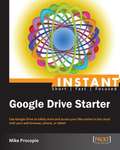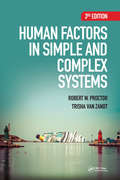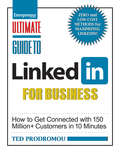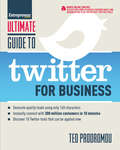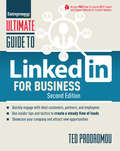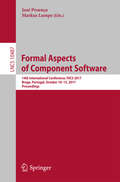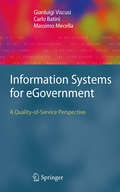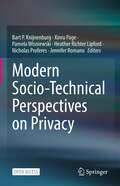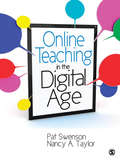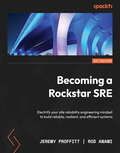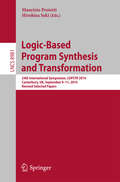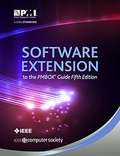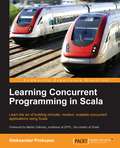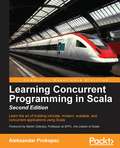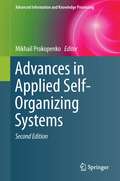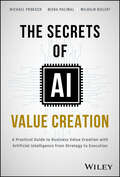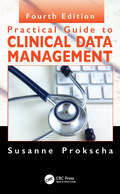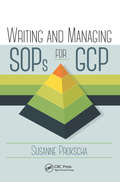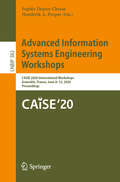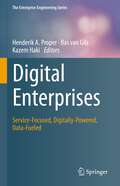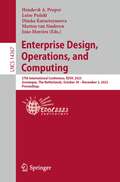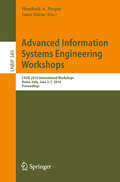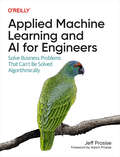- Table View
- List View
Instant Google Drive Starter
by Mike ProcopioThis book is a Starter which teaches you how to use Google Drive practically. This book is perfect for people of all skill levels who want to enjoy the benefits of using Google Drive to safely store their files online and in the cloud. It's also great for anyone looking to learn more about cloud computing in general. Readers are expected to have an Internet connection and basic knowledge of using the internet.
Human Factors in Simple and Complex Systems, Third Edition
by Robert W. Proctor Trisha Van ZandtRecently, there have been a number of advances in technology, including in mobile devices, globalization of companies, display technologies and healthcare, all of which require significant input and evaluation from human factors specialists. Accordingly, this textbook has been completely updated, with some chapters folded into other chapters and new chapters added where needed. The text continues to fill the need for a textbook that bridges the gap between the conceptual and empirical foundations of the field.
Printreading for Residential Construction, Sixth Edition
by Thomas E. Proctor Leonard P. ToenjesPrintreading for Residential Constructionpresents printreading fundamentals and provides printreading activities related to residential construction. Topics presented include sketching, computer-aided design (CAD), trade math symbols and abbreviations, plot plans, floor plans, elevations, sections, and details. This new edition provides information on revised building codes, LEED for Homes, green building practices, advanced house framing techniques, insulation, and the whole-house systems approach. Content Overview Construction Documents Working Drawing Concepts Trade Math Symbols and Abbreviations Plot Plans Floor Plans Elevations Sections Details Trade Information - Foundations, Framing, and Finishes Trade Information - Electrical, Plumbing, and HVAC Final Review and Exams Appendix Glossary Index
Ultimate Guide to LinkedIn for Business
by Ted ProdromouLinkedIn, which began in the living room of co-founder Reid Hoffman in 2002, is now the world's largest professional network on the Internet with 150 million users. In 2011 alone there were 4.5 million professionally oriented searches on LinkedIn. This vast resource is not only the number one way reconnect with former colleagues and employers and get job leads, it has become the fastest-growing, most powerful source for businesses to target the right potential customers, partners, and employees.The Ultimate Guide to LinkedIn for Business, by longtime Internet authority Ted Prodromou, offers a wealth of zero or low-cost methods for maximizing this dynamic resource. It's easy to get started on LinkedIn, but fully mastering its intricacies and knowing how to get the most effective connections that lead to greater exposure, increased marketshare, and breakout sales can be tricky and time-consuming. Whereas most people think of LinkedIn as merely a way to get "job leads," those who follow Ted's instruction develop a strategic approach to engaging people and multiplying the links that can open up business in revolutionary, unexpected ways-including globally.
Ultimate Guide to Twitter for Business
by Ted ProdromouWho should you follow? How many people should you follow? How often should you tweet?Most people don't get Twitter. Longtime internet guru Ted Prodromou shows you how to become someone who does. Set to prove that 140 characters or less and a hashtag can dramatically grow your brand and your business, Prodromou takes you step by step into the Twitterverse and shows you how to tweet your way to the top of your industry.
Ultimate Guide to LinkedIn for Business
by Ted Prodromou Perry Marshall James MalinchakThis popular title delivers an in-depth guide to targeting, reaching, and gaining ideal customers using the latest updates on LinkedIn. LinkedIn expert Ted Prodromou offers a wealth of no- or low-cost methods for maximizing this dynamic resource. Following his lead, readers learn to link with the most effective connections for greater exposure.Updates in this edition include: staying up-to-date with LinkedIn Contacts, Pulse, and Publisher programs; expansion of premium accounts to help optimize business profiles, stand out in search results, and track impact; t how to implement new features like Showcase and Company Updates pages for extended presence in newsfeeds and with followers; smarter LinkedIn Search that saves time and money with customized, comprehensive results. Other important topics covered include: techniques and tips to easily navigate LinkedIn's interface; timesaving tips on finding and matching data from businesses and people; expert guidance on super-charging a business or individual profile; insider advice on getting found through LinkedIn and maximizing search; professional instruction on promoting a LinkedIn profile. The latest information is illustrated with current snapshots, fresh examples, and case studies, along with new techniques to easily maneuver LinkedIn's interface.
Formal Aspects of Component Software
by José Proença Markus LumpeThis book constitutes revised selected papers of the 7th International Workshop on Formal Aspects of Component Software, FACS 2010, held in Guimar#65533;es, Portugal, in October 2010. The 13 full papers and 4 short papers presented together with 1 panel discussion and 2 invited talks were carefully reviewed and selected from 37 submissions. The workshop seeks to develop a better understanding on how formal methods can or should be used for component-based software development to succeed.
Information Systems for eGovernment
by Prof. Carlo Univ. degli Studi di Milano Gianluigi Viscusi Massimo MecellaThe success of public sector investment in eGovernment initiatives strongly depends on effectively exploiting all aspects of ICT systems and infrastructures. The related objectives are hardly reachable without methodological frameworks that provide a holistic perspective and knowledge on the contexts of eGovernment initiatives. Yet public administrators usually have a mix of legal and administrative knowledge, while lacking an information systems background. With this book, Viscusi, Batini and Mecella provide a comprehensive methodology for service-oriented information systems planning, with special emphasis on eGovernment initiatives. They present the eG4M methodology which structurally supports the development of optimal eGovernment plans, considering technological, organizational, legal, economic and social aspects alike. The approach is focused on two pillars: the quality of the provided services and related processes, and the quality of the data managed in the administrative processes and services. The book is written for public administrators, decision-makers, practitioners, ICT professionals and graduate students, providing a comprehensive perspective of the challenges, opportunities and decisions related to strategic and operational planning of service-oriented information systems in eGovernment.
Modern Socio-Technical Perspectives on Privacy
by Nicholas Proferes Bart P. Knijnenburg Xinru Page Pamela Wisniewski Heather Richter Lipford Jennifer RomanoThis open access book provides researchers and professionals with a foundational understanding of online privacy as well as insight into the socio-technical privacy issues that are most pertinent to modern information systems, covering several modern topics (e.g., privacy in social media, IoT) and underexplored areas (e.g., privacy accessibility, privacy for vulnerable populations, cross-cultural privacy). The book is structured in four parts, which follow after an introduction to privacy on both a technical and social level: Privacy Theory and Methods covers a range of theoretical lenses through which one can view the concept of privacy. The chapters in this part relate to modern privacy phenomena, thus emphasizing its relevance to our digital, networked lives. Next, Domains covers a number of areas in which privacy concerns and implications are particularly salient, including among others social media, healthcare, smart cities, wearable IT, and trackers. The Audiences section then highlights audiences that have traditionally been ignored when creating privacy-preserving experiences: people from other (non-Western) cultures, people with accessibility needs, adolescents, and people who are underrepresented in terms of their race, class, gender or sexual identity, religion or some combination. Finally, the chapters in Moving Forward outline approaches to privacy that move beyond one-size-fits-all solutions, explore ethical considerations, and describe the regulatory landscape that governs privacy through laws and policies. Perhaps even more so than the other chapters in this book, these chapters are forward-looking by using current personalized, ethical and legal approaches as a starting point for re-conceptualizations of privacy to serve the modern technological landscape. The book’s primary goal is to inform IT students, researchers, and professionals about both the fundamentals of online privacy and the issues that are most pertinent to modern information systems. Lecturers or teachers can assign (parts of) the book for a “professional issues” course. IT professionals may select chapters covering domains and audiences relevant to their field of work, as well as the Moving Forward chapters that cover ethical and legal aspects. Academics who are interested in studying privacy or privacy-related topics will find a broad introduction in both technical and social aspects.
Online Teaching in the Digital Age
by Professor Patricia Jane Swenson Professor Nancy Annette TaylorOnline Teaching in the Digital Age by Pat Swenson and Nancy Taylor provides educators with the essential knowledge needed to successfully develop and teach an online course. Throughout this practical hands-on guide, the authors offer 15 years of personal online teaching experience in language accessible to both the novice and advanced online educator. Developed through theory and practice, the text shows educators how to take the materials used in a traditional classroom and transfer them to a new virtual environment.
Becoming a Rockstar SRE: Electrify your site reliability engineering mindset to build reliable, resilient, and efficient systems
by Jeremy Proffitt Rod AnamiExcel in site reliability engineering by learning from field-driven lessons on observability and reliability in code, architecture, process, systems management, costs, and people to minimize downtime and enhance developers' outputPurchase of the print or Kindle book includes a free eBook in the PDF formatKey FeaturesUnderstand the goals of an SRE in terms of reliability, efficiency, and constant improvementMaster highly resilient architecture in server, serverless, and containerized workloadsLearn the why and when of employing Kubernetes, GitHub, Prometheus, Grafana, Terraform, Python, Argo CD, and GitOpsBook DescriptionSite reliability engineering is all about continuous improvement, finding the balance between business and product demands while working within technological limitations to drive higher revenue. But quantifying and understanding reliability, handling resources, and meeting developer requirements can sometimes be overwhelming. With a focus on reliability from an infrastructure and coding perspective, Becoming a Rockstar SRE brings forth the site reliability engineer (SRE) persona using real-world examples. This book will acquaint you the role of an SRE, followed by the why and how of site reliability engineering. It walks you through the jobs of an SRE, from the automation of CI/CD pipelines and reducing toil to reliability best practices. You'll learn what creates bad code and how to circumvent it with reliable design and patterns. The book also guides you through interacting and negotiating with businesses and vendors on various technical matters and exploring observability, outages, and why and how to craft an excellent runbook. Finally, you'll learn how to elevate your site reliability engineering career, including certifications and interview tips and questions. By the end of this book, you'll be able to identify and measure reliability, reduce downtime, troubleshoot outages, and enhance productivity to become a true rockstar SRE!What you will learnGet insights into the SRE role and its evolution, starting from Google's original visionUnderstand the key terms, such as golden signals, SLO, SLI, MTBF, MTTR, and MTTDOvercome the challenges in adopting site reliability engineeringEmploy reliable architecture and deployments with serverless, containerization, and release strategiesIdentify monitoring targets and determine observability strategyReduce toil and leverage root cause analysis to enhance efficiency and reliabilityRealize how business decisions can impact quality and reliabilityWho this book is forThis book is for IT professionals, including developers looking to advance into an SRE role, system administrators mastering technologies, and executives experiencing repeated downtime in their organizations. Anyone interested in bringing reliability and automation to their organization to drive down customer impact and revenue loss while increasing development throughput will find this book useful. A basic understanding of API and web architecture and some experience with cloud computing and services will assist with understanding the concepts covered.
Logic-Based Program Synthesis and Transformation
by Maurizio Proietti Hirohisa SekiThis book constitutes the thoroughly refereed post-conference proceedings of the 24th International Symposium on Logic-Based Program Synthesis and Transformation, LOPSTR 2014, held in Canterbury, UK, in September 2014. The 18 revised full papers presented together with 2 invited talks were carefully reviewed and selected from 34 submissions. The aim of the LOPSTR series is to stimulate and promote international research and collaboration on logic-based program development. The papers are organized along a set of thematic tracks: program analysis and transformation, constraint handling rules, termination analysis, security, program testing and verification, program synthesis, program derivation, semantic issues in logic programming and program transformation and optimization.
Software Extension to the PMBOK Guide
by Project Management InstituteDesigned to be used in tandem with the latest edition of the PMBOK Guide, this comprehensive volume closely follows the PMBOK Guide's approach to style, structure and naming, while providing readers a balanced view of methods, tools, and techniques for managing software projects across the life cycle continuum from highly predictive life cycles to highly adaptive life cycles. Software Extension to the PMBOK Guide Fifth Edition provides readers with knowledge and practices that will not only improve their efficiency and effectiveness but that of their management teams and project members as well.
Gwent: Art of The Witcher Card Game
by CD Projekt RedWhether played on the exotic felt tabletop in a palatial casino, or on the rough-hewn bar in a tavern's smoky din, the game of Gwent is never a dull one! With cards that feature fantastic art that only adds to the strategic thrill of crushing one's opponent, Gwent: The Witcher Card Game offers a singular gaming experience. Now, Dark Horse is proud to present each cards' gorgeous artwork in a stunning hardbound volume. Celebrate wondrous artistry and cutthroat gameplay with The Gwent Gallery: Art of the Witcher Card Game!
Learning Concurrent Programming in Scala
by Aleksandar ProkopecThis book is a must-have tutorial for software developers aiming to write concurrent programs in Scala, or broaden their existing knowledge of concurrency. This book is intended for Scala programmers that have no prior knowledge about concurrent programming, as well as those seeking to broaden their existing knowledge about concurrency. Basic knowledge of the Scala programming language will be helpful. Readers with a solid knowledge in another programming language, such as Java, should find this book easily accessible.
Learning Concurrent Programming in Scala - Second Edition
by Aleksandar ProkopecLearn the art of building intricate, modern, scalable, and concurrent applications using Scala About This Book • Make the most of Scala by understanding its philosophy and harnessing the power of multicores • Get acquainted with cutting-edge technologies in the field of concurrency, through practical, real-world applications • Get this step-by-step guide packed with pragmatic examples Who This Book Is For If you are a Scala programmer with no prior knowledge about concurrent programming, or seeking to broaden your existing knowledge about concurrency, this book is for you. Basic knowledge of the Scala programming language will be helpful. Also if you have a solid knowledge in another programming language, such as Java, you should find this book easily accessible. What You Will Learn • Get to grips with the fundamentals of concurrent programming on modern multiprocessor systems • Build high-performance concurrent systems from simple, low-level concurrency primitives • Express asynchrony in concurrent computations with futures and promises • Seamlessly accelerate sequential programs by using data-parallel collections • Design safe, scalable, and easy-to-comprehend in-memory transactional data models • Transparently create distributed applications that scale across multiple machines • Integrate different concurrency frameworks together in large applications • Develop and implement scalable and easy-to-understand concurrent applications in Scala 2.12 In Detail Scala is a modern, multiparadigm programming language designed to express common programming patterns in a concise, elegant, and type-safe way. Scala smoothly integrates the features of object-oriented and functional languages. In this second edition, you will find updated coverage of the Scala 2.12 platform. The Scala 2.12 series targets Java 8 and requires it for execution. The book starts by introducing you to the foundations of concurrent programming on the JVM, outlining the basics of the Java Memory Model, and then shows some of the classic building blocks of concurrency, such as the atomic variables, thread pools, and concurrent data structures, along with the caveats of traditional concurrency. The book then walks you through different high-level concurrency abstractions, each tailored toward a specific class of programming tasks, while touching on the latest advancements of async programming capabilities of Scala. It also covers some useful patterns and idioms to use with the techniques described. Finally, the book presents an overview of when to use which concurrency library and demonstrates how they all work together, and then presents new exciting approaches to building concurrent and distributed systems. Style and approach The book provides a step-by-step introduction to concurrent programming. It focuses on easy-to-understand examples that are pragmatic and applicable to real-world applications. Different topics are approached in a bottom-up fashion, gradually going from the simplest foundations to the most advanced features.
Advances in Applied Self-Organizing Systems (Advanced Information and Knowledge Processing)
by Mikhail ProkopenkoHow do we design a self-organizing system? Is it possible to validate and control non-deterministic dynamics? What is the right balance between the emergent patterns that bring robustness, adaptability and scalability, and the traditional need for verification and validation of the outcomes? The last several decades have seen much progress from original ideas of "emergent functionality" and "design for emergence", to sophisticated mathematical formalisms of "guided self-organization". And yet the main challenge remains, attracting the best scientific and engineering expertise to this elusive problem. This book presents state-of-the-practice of successfully engineered self-organizing systems, and examines ways to balance design and self-organization in the context of applications. As demonstrated in this second edition of Advances in Applied Self-Organizing Systems, finding this balance helps to deal with practical challenges as diverse as navigation of microscopic robots within blood vessels, self-monitoring aerospace vehicles, collective and modular robotics adapted for autonomous reconnaissance and surveillance, self-managing grids and multiprocessor scheduling, data visualization and self-modifying digital and analog circuitry, intrusion detection in computer networks, reconstruction of hydro-physical fields, traffic management, immunocomputing and nature-inspired computation. Many algorithms proposed and discussed in this volume are biologically inspired, and the reader will also gain an insight into cellular automata, genetic algorithms, artificial immune systems, snake-like locomotion, ant foraging, birds flocking, neuromorphic circuits, amongst others. Demonstrating the practical relevance and applicability of self-organization, Advances in Applied Self-Organizing Systems will be an invaluable tool for advanced students and researchers in a wide range of fields.
The Secrets of AI Value Creation: A Practical Guide to Business Value Creation with Artificial Intelligence from Strategy to Execution
by Michael Proksch Nisha Paliwal Wilhelm BielertUnlock unprecedented levels of value at your firm by implementing artificial intelligence In The Secrets of AI Value Creation: Practical Guide to Business Value Creation with Artificial Intelligence from Strategy to Execution, a team of renowned artificial intelligence leaders and experts delivers an insightful blueprint for unlocking the value of AI in your company. This book presents a comprehensive framework that can be applied to your organisation, exploring the value drivers and challenges you might face throughout your AI journey. You will uncover effective strategies and tactics utilised by successful artificial intelligence (AI) achievers to propel business growth. In the book, you’ll explore critical value drivers and key capabilities that will determine the success or failure of your company’s AI initiatives. The authors examine the subject from multiple perspectives, including business, technology, data, algorithmics, and psychology. Organized into four parts and fourteen insightful chapters, the book includes: Concrete examples and real-world case studies illustrating the practical impact of the ideas discussed within Best practices used and common challenges encountered when first incorporating AI into your company’s operations A comprehensive framework you can use to navigate the complexities of AI implementation and value creation An indispensable blueprint for artificial intelligence implementation at your organisation, The Secrets of AI Value Creation is a can’t-miss resource for managers, executives, directors, entrepreneurs, founders, data analysts, and business- and tech-side professionals looking for ways to unlock new forms of value in their company. The authors, who are industry leaders, assemble the puzzle pieces into a comprehensive framework for AI value creation: Michael Proksch is an expert on the subject of AI strategy and value creation. He worked with various Fortune 2000 organisations and focuses on optimising business operations building customised AI solutions, and driving organisational adoption of AI through the creation of value and trust. Nisha Paliwal is a senior technology executive. She is known for her expertise in various technology services, focusing on the importance of bringing AI technology, computing resources, data, and talent together in a synchronous and organic way. Wilhelm Bielert is a seasoned senior executive with an extensive of experience in digital transformation, program and project management, and corporate restructuring. With a proven track record, he has successfully led transformative initiatives in multinational corporations, specialising in harnessing the power of AI and other cutting-edge technologies to drive substantial value creation.
Practical Guide to Clinical Data Management
by Susanne ProkschaThe management of clinical data, from its collection during a trial to its extraction for analysis, has become critical in preparing a regulatory submission and obtaining approval to market a treatment. Groundbreaking on its initial publication nearly 14 years ago, and evolving with the field in each iteration since then, this latest volume includes revisions to all chapters to reflect the recent updates to ICH E6, good clinical practices, electronic data capture, and interactive response technologies. Keeping the coverage practical, the author focuses on the most critical information that impacts clinical trial conduct, providing a full end-to-end overview for clinical data managers.Features: Provides an introduction and background information for the spectrum of clinical data management tasks. Outstanding text in the industry and has been used by the Society for Clinical Data Management in creating its certification exam. Explains the high-level flow of a clinical trial from creation of the protocol through study lock. Reflects electronic data capture and interactive response technologies. Discusses using the concept of three phases in the clinical data management of a study: study startup, study conduct, and study closeout, to write procedures and train staff.
Writing and Managing SOPs for GCP
by Susanne ProkschaThis book discusses managing SOPs for GCP from conception to retirement. It recommends approaches that have a direct impact on improving SOP and regulatory compliance. Throughout the text, the book provides a user's point of view to keep topics focused on the practical aspects of SOPs and SOP management.
Advanced Information Systems Engineering Workshops: CAiSE 2020 International Workshops, Grenoble, France, June 8–12, 2020, Proceedings (Lecture Notes in Business Information Processing #382)
by Henderik A. Proper Sophie Dupuy-ChessaThis book constitutes the thoroughly refereed proceedings of the international workshops associated with the 32nd International Conference on Advanced Information Systems Engineering, CAiSE 2020, which was planned to take place in Grenoble, France, during June 8-12, 2020. Due to the Coronavirus pandemic the conference was held virtually. The workshops included in this book are: KET4DF, The Second International Workshop on Key Enabling Technologies for Digital Factories ISESL, The First International Workshop on Information Systems Engineering for Smarter Life The total of 8 full and 3 short papers presented in this volume were carefully reviewed and selected from 20 submissions. The book also contains one invited talk.
Digital Enterprises: Service-Focused, Digitally-Powered, Data-Fueled (The Enterprise Engineering Series)
by Henderik A. Proper Bas Van Gils Kazem HakiThis book explores different aspects of and provides concrete suggestions to meet the three main challenges for becoming a “Digital Enterprise”: the transition to the digital age, the emergence of service ecosystems, and the growing role of data as a key underlying resource. As a result of these intertwined and mutually amplifying trends, today’s enterprises are confronted with several challenges that profoundly impact their design, from the definitions of products and services offered to their clients via the business processes that deliver these products and services to the underlying IT infrastructure.The contributions which are written by leading enterprise architecture researchers and managers of large corporations cover four key aspects which form each one part of the book: Part I presents experiences how different enterprises currently already need to embrace and exploit new challenges like blockchain, customer-centric services, or value co-creation networks. Part II looks at the need for a new design logic, i.e. the need for new ways of thinking regarding the design of enterprises. Part III is concerned with the coordination needed among different stakeholders of the ensuing continuous transformations. Part IV eventually reflects on the ongoing consequences for enterprise modeling as used to capture both the current affairs of an enterprise, as well as design/study its possible future affairs.The target audience of this book are both master and PhD level students who want to gain insights into key aspects of the challenges confronting digital enterprises, as well as enterprise architects and information managers working in enterprises that are on their way to become digital.
Enterprise Design, Operations, and Computing: 27th International Conference, EDOC 2023, Groningen, The Netherlands, October 30 – November 3, 2023, Proceedings (Lecture Notes in Computer Science #14367)
by Henderik A. Proper Luise Pufahl Dimka Karastoyanova Marten Van Sinderen João MoreiraThis book constitutes the refereed proceedings of the 27th International Conference on Enterprise Design, Operations, and Computing, EDOC 2023, held in Groningen, The Netherlands, during October 30–November 3, 2023.The 12 full papers included in this book were carefully reviewed and selected from 36submissions. They were organized in topical sections as follows: Enterprise Modeling, Enterprise Architecture & Engineering, Model-Based Software Engineering, Enterprise Analysis with Process Mining, Process Improvement & Engineering, and Modeling in an Enterprise Context.
Advanced Information Systems Engineering Workshops: CAiSE 2019 International Workshops, Rome, Italy, June 3-7, 2019, Proceedings (Lecture Notes in Business Information Processing #349)
by Henderik A. Proper Janis StirnaThis book constitutes the thoroughly refereed proceedings of three international workshops held in Rome, Italy, in June 2019, associated with the 31st International Conference on Advanced Information Systems Engineering, CAiSE 2019. These workshops were: COGNISE, The 7th International Workshop on Cognitive Aspects of Information Systems EngineeringKET4DF, First International Workshop on Key Enabling Technologies for Digital FactoriesBIOC&FAISE, Joint Workshop on Blockchains for Inter-Organizational Collaboration and Felxible Advanced Information SystemsThe total of 19 papers presented in this volume were carefully reviewed and selected from 39 submissions.
Applied Machine Learning and AI for Engineers
by Jeff ProsiseWhile many introductory guides to AI are calculus books in disguise, this one mostly eschews the math. Instead, author Jeff Prosise helps engineers and software developers build an intuitive understanding of AI to solve business problems. Need to create a system to detect the sounds of illegal logging in the rainforest, analyze text for sentiment, or predict early failures in rotating machinery? This practical book teaches you the skills necessary to put AI and machine learning to work at your company. Applied Machine Learning and AI for Engineers provides examples and illustrations from the AI and ML course Prosise teaches at companies and research institutions worldwide. There's no fluff and no scary equations—just a fast start for engineers and software developers, complete with hands-on examples. This book helps you: Learn what machine learning and deep learning are and what they can accomplishUnderstand how popular learning algorithms work and when to apply themBuild machine learning models in Python with Scikit-Learn, and neural networks with Keras and TensorFlowTrain and score regression models and binary and multiclass classification modelsBuild facial recognition models and object detection modelsBuild language models that respond to natural-language queries and translate text to other languagesUse Cognitive Services to infuse AI into the apps that you write
